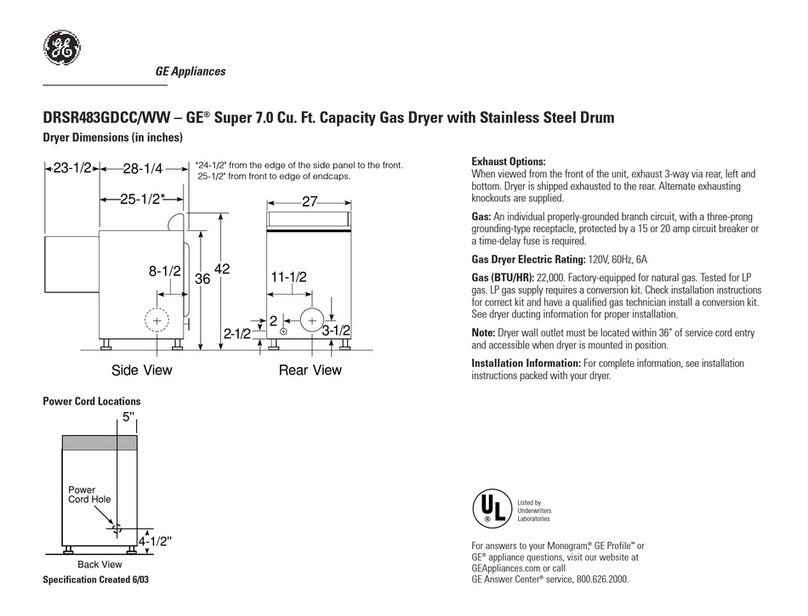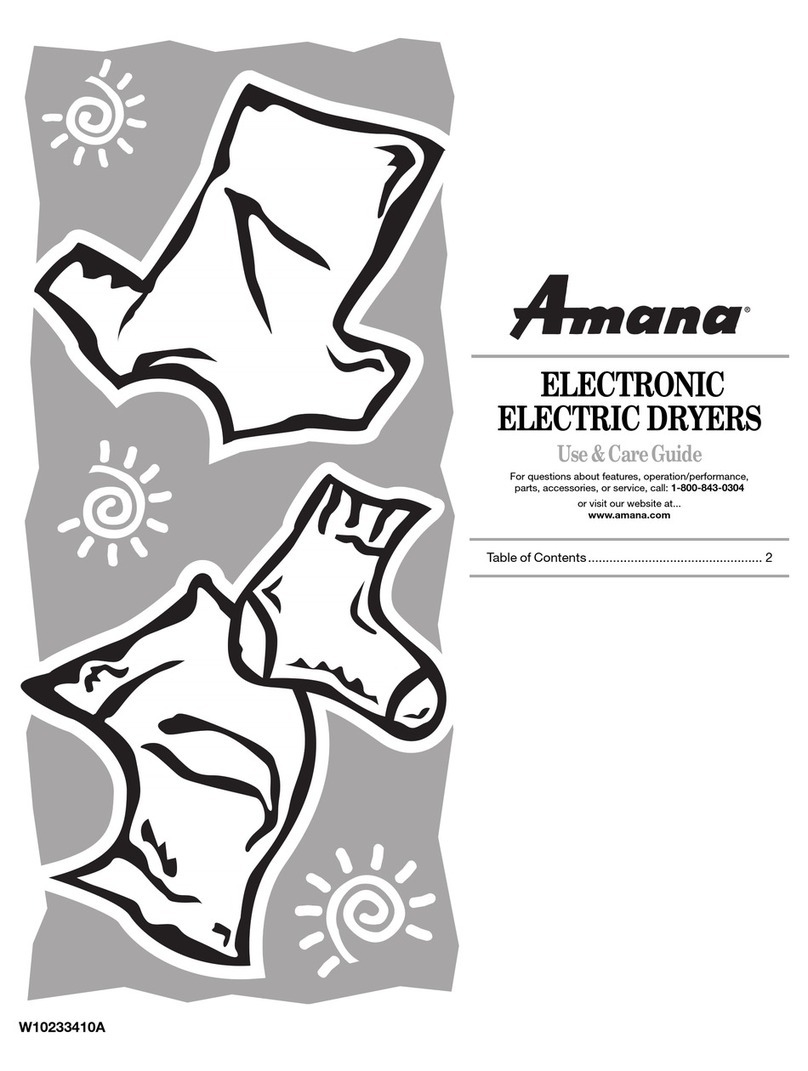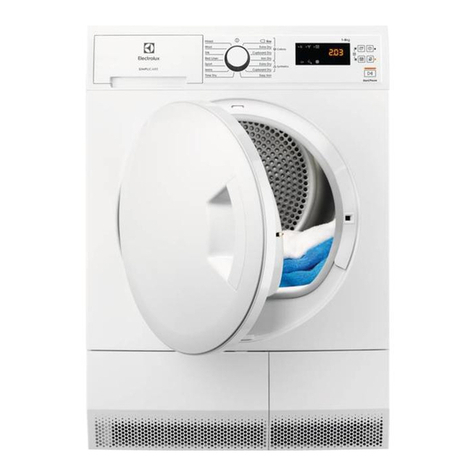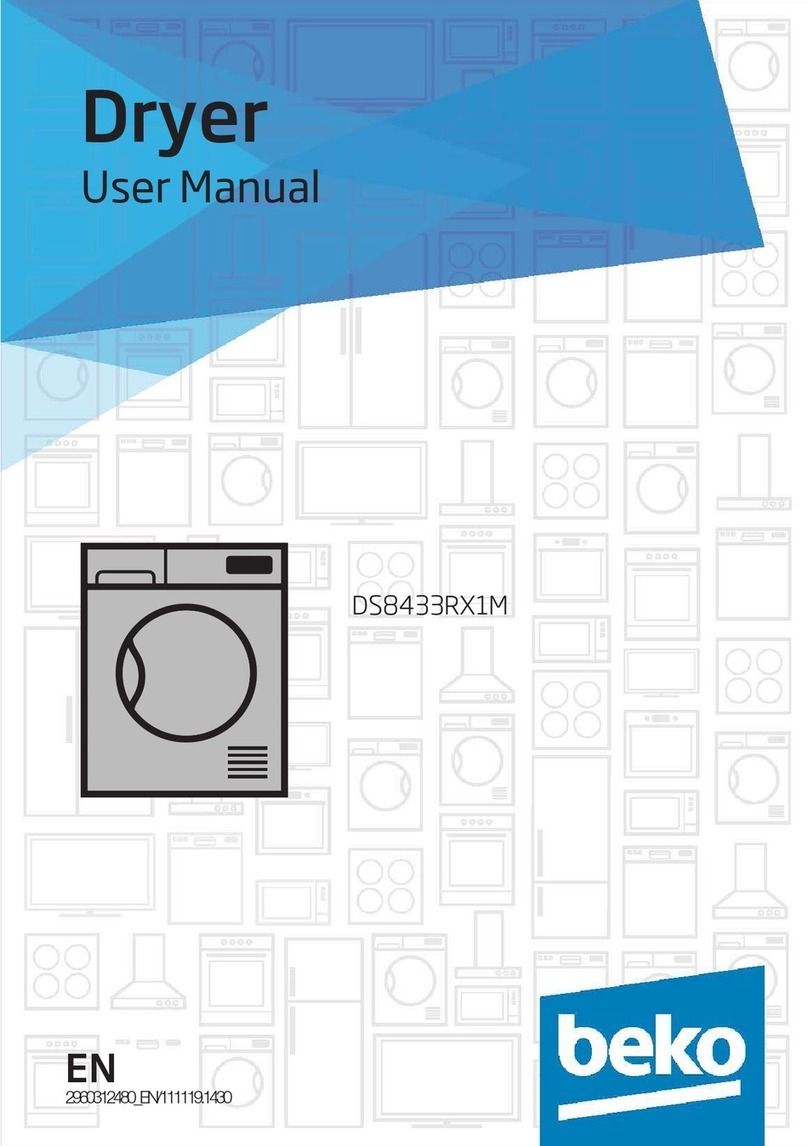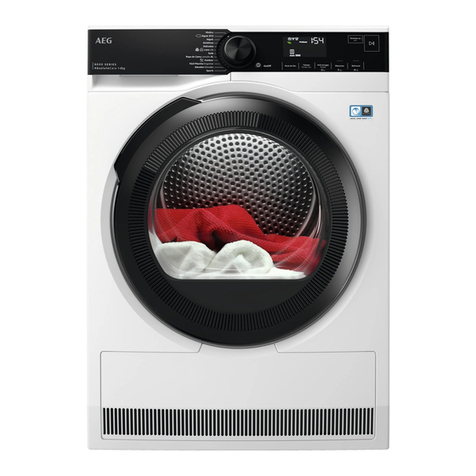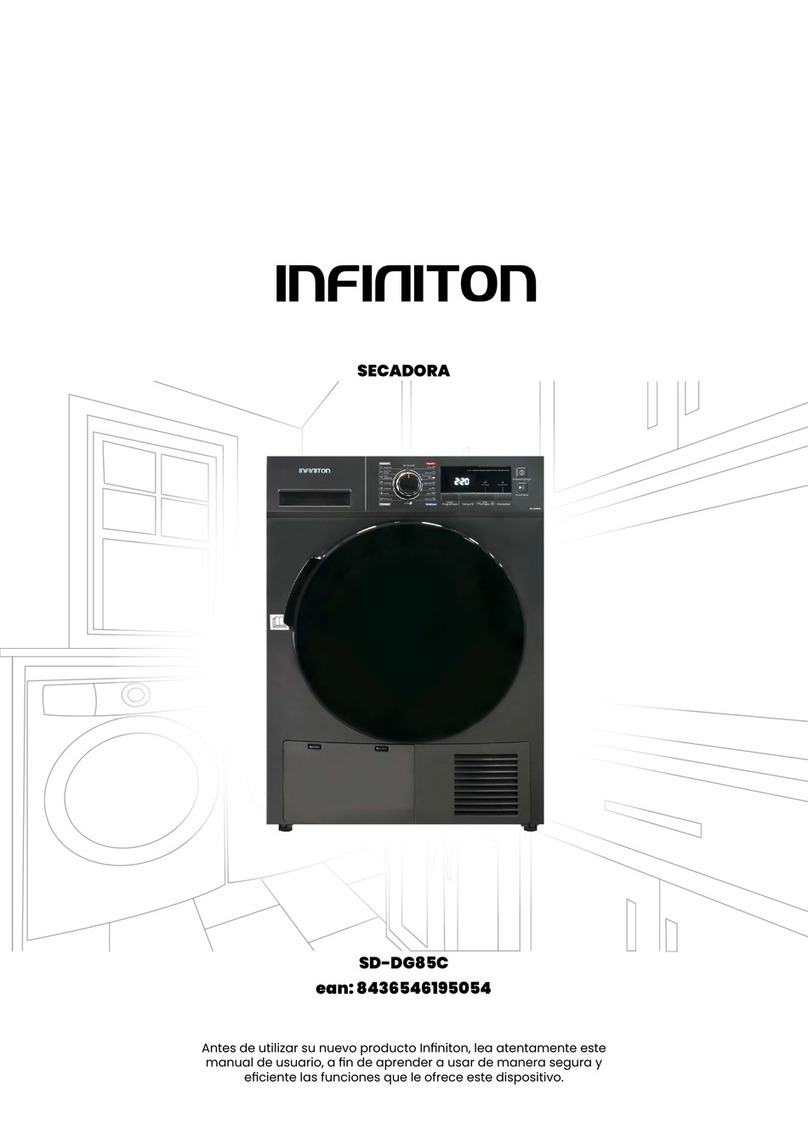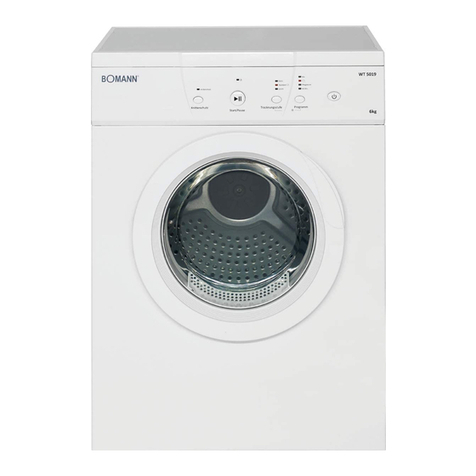GE GFDN120ED0WW User manual
Other GE Dryer manuals

GE
GE GTD65EBMR User manual
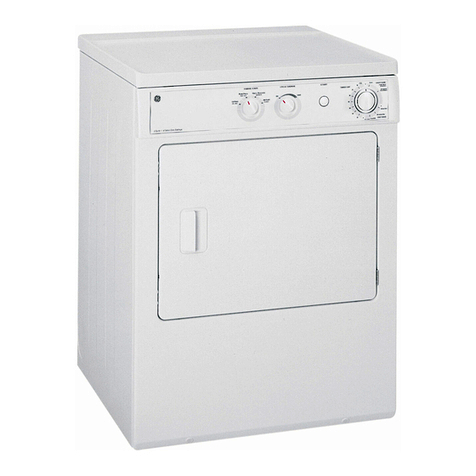
GE
GE Spacemaker DSXH43 Original instructions
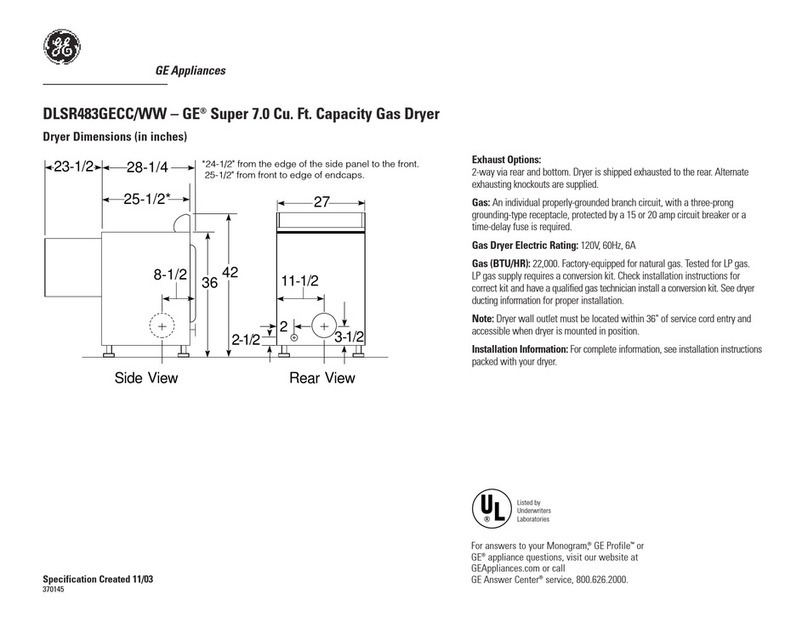
GE
GE DLSR483GEWW User manual
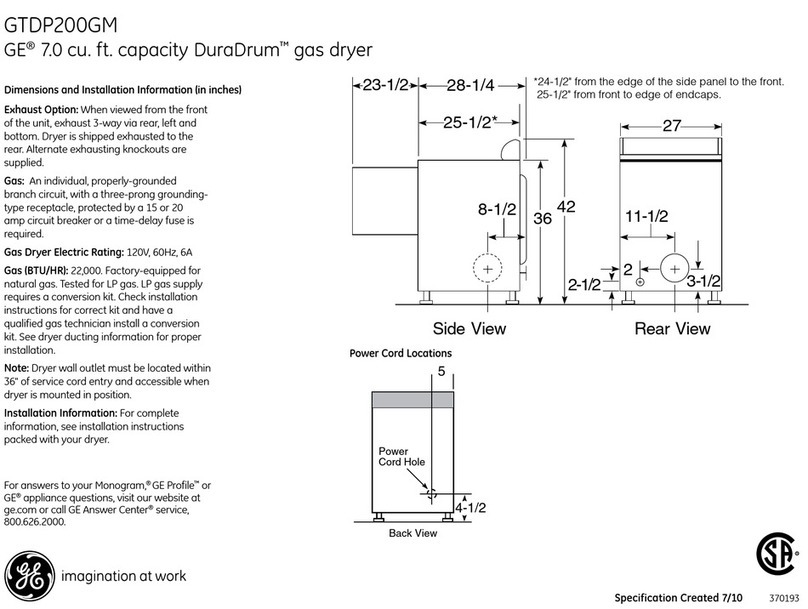
GE
GE DuraDrum GTDP200GM Manual
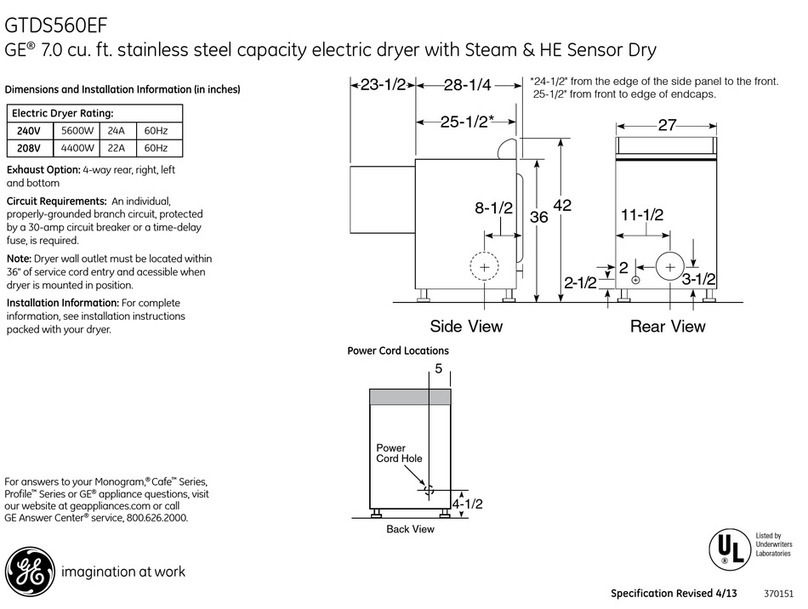
GE
GE GTDS560EFWS User manual

GE
GE GFD65 Original instructions

GE
GE GFV40 User manual
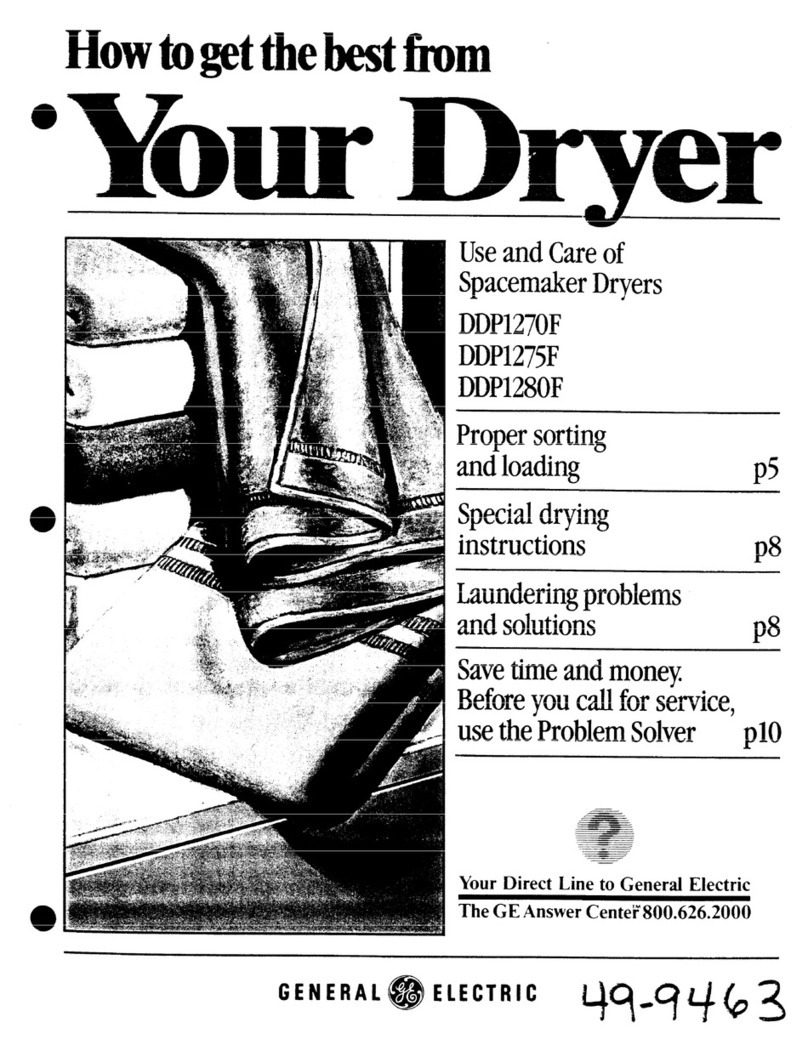
GE
GE DDP1275F Installation instructions
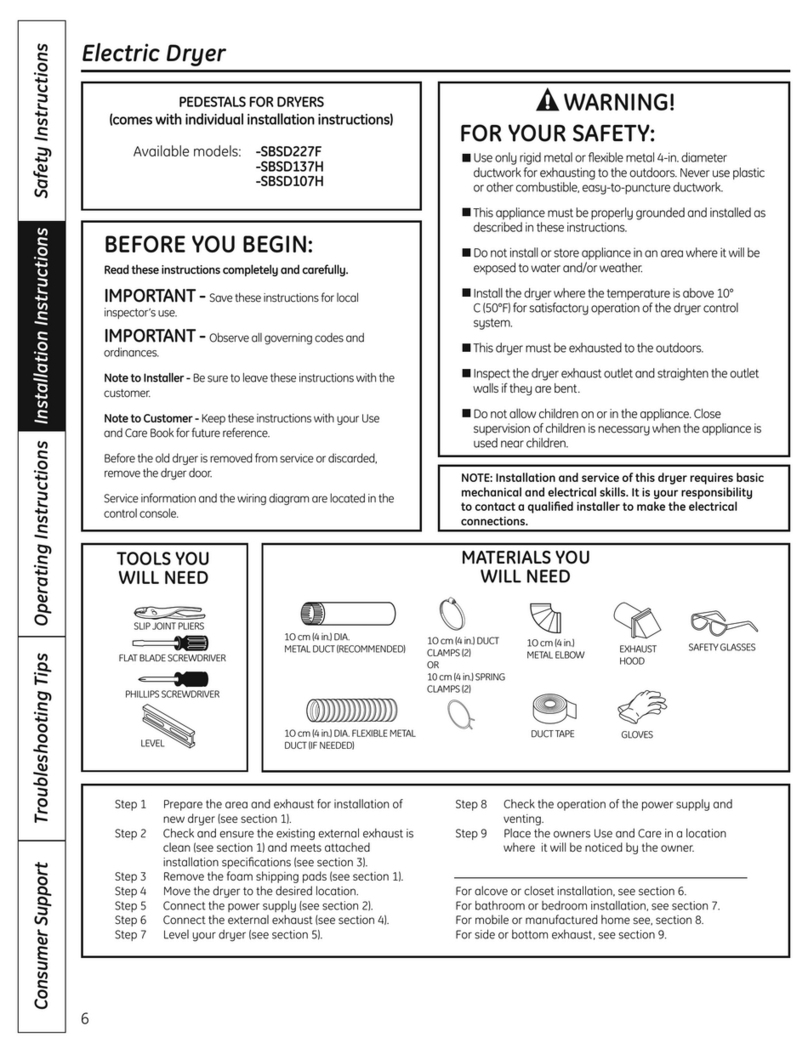
GE
GE SBSD227F User manual

GE
GE DuraDrum GTDX100EM Manual

GE
GE Coin- Operated Commercial Dryer and Manual
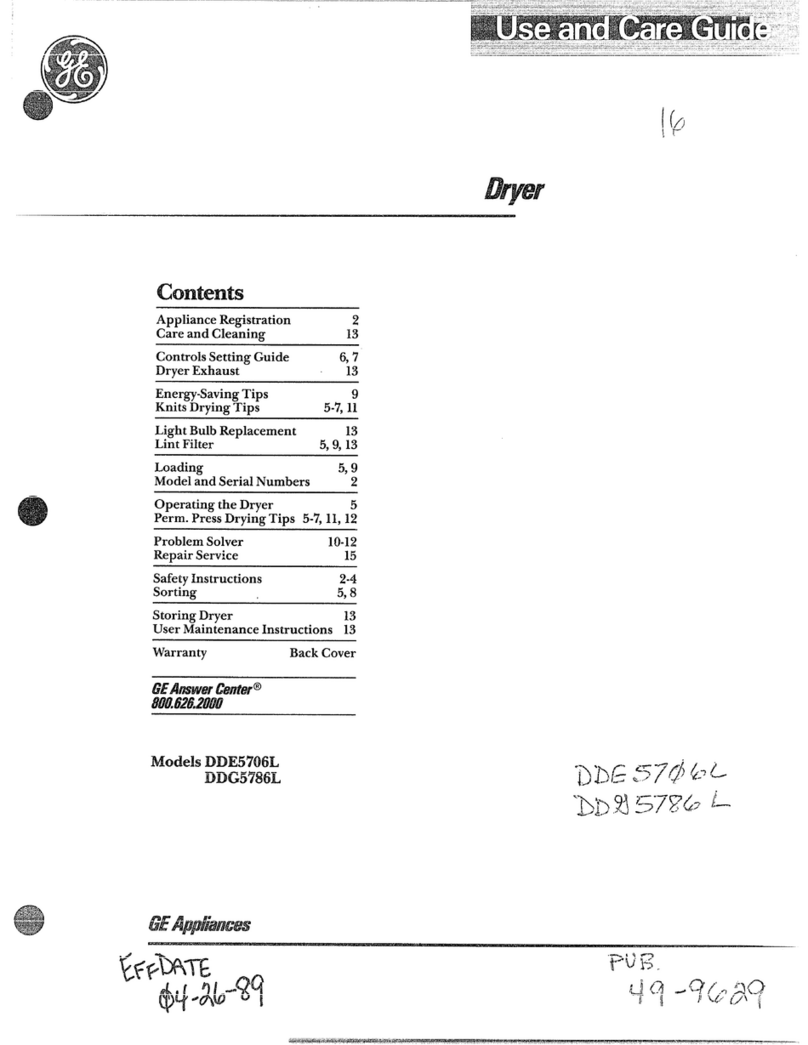
GE
GE DDE5706L User manual
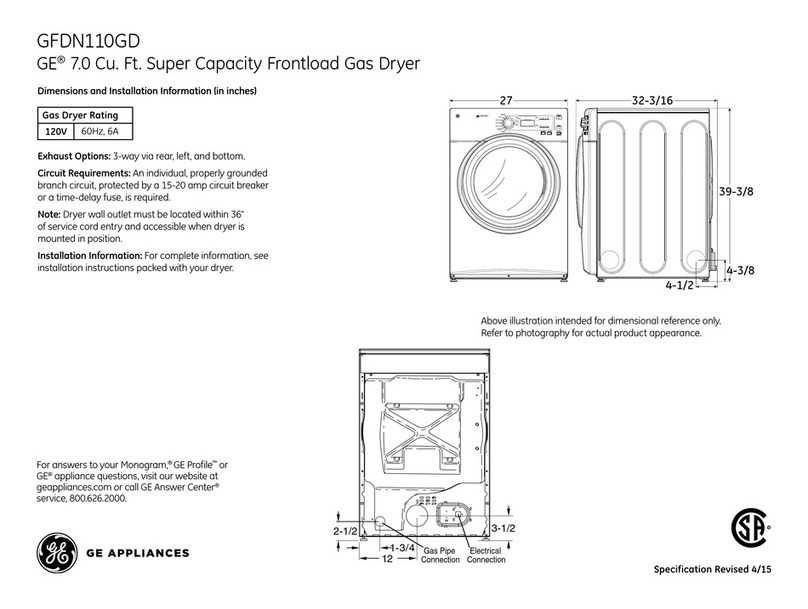
GE
GE GFDN110GD User manual
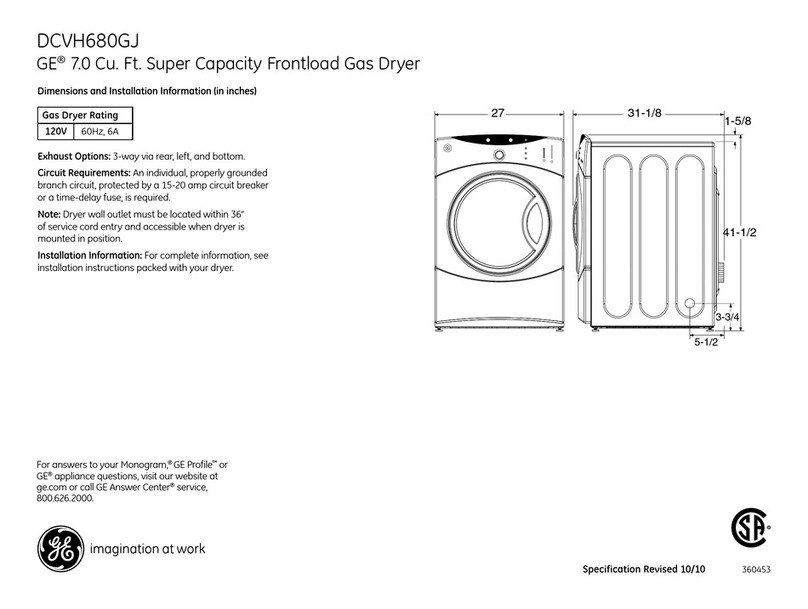
GE
GE DCVH680GJBB - 27-in Gas Dryer Manual

GE
GE GFDS350ELWW User manual
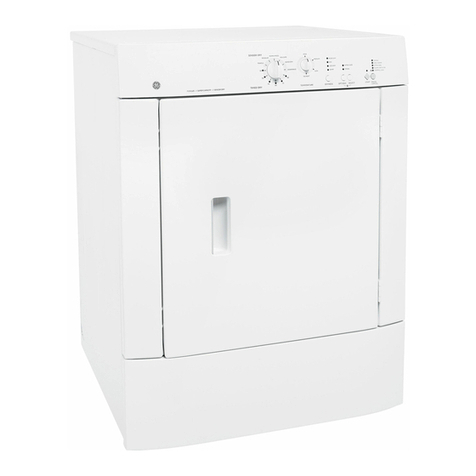
GE
GE Spacemaker DSXH47 Operating instructions
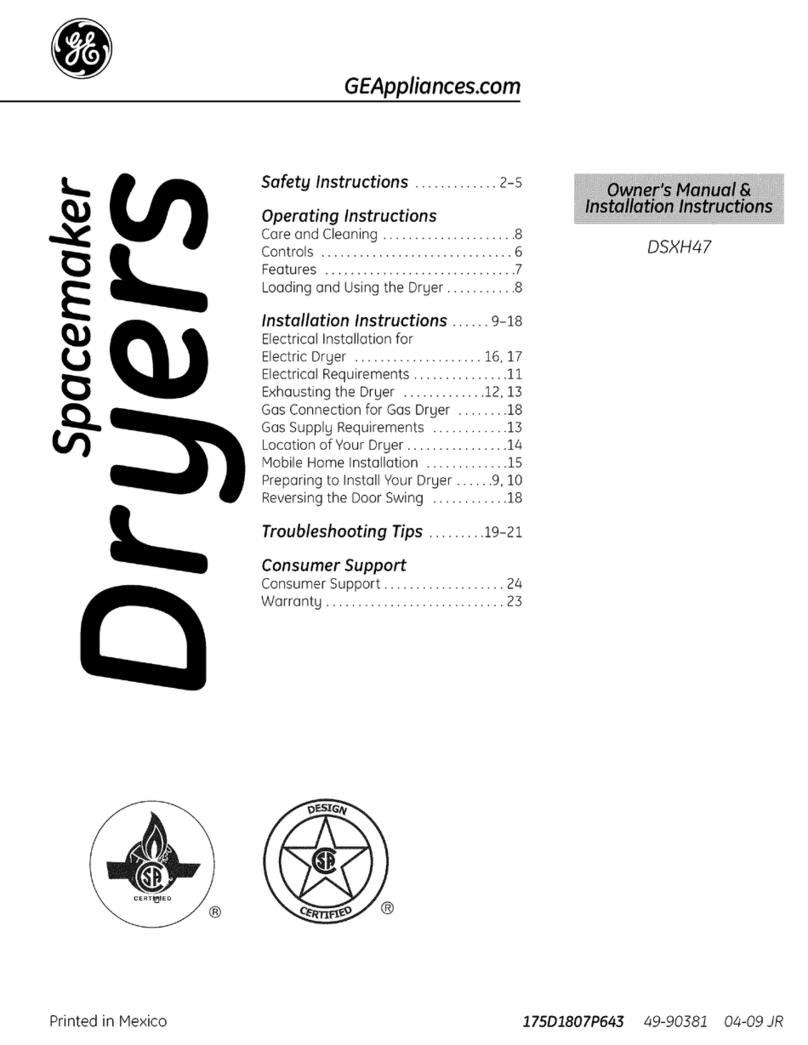
GE
GE Spacemaker DSXH47 Operating instructions

GE
GE GFDN240 User manual

GE
GE PSXH47 User manual

GE
GE DRSR483EGWW User manual
Popular Dryer manuals by other brands
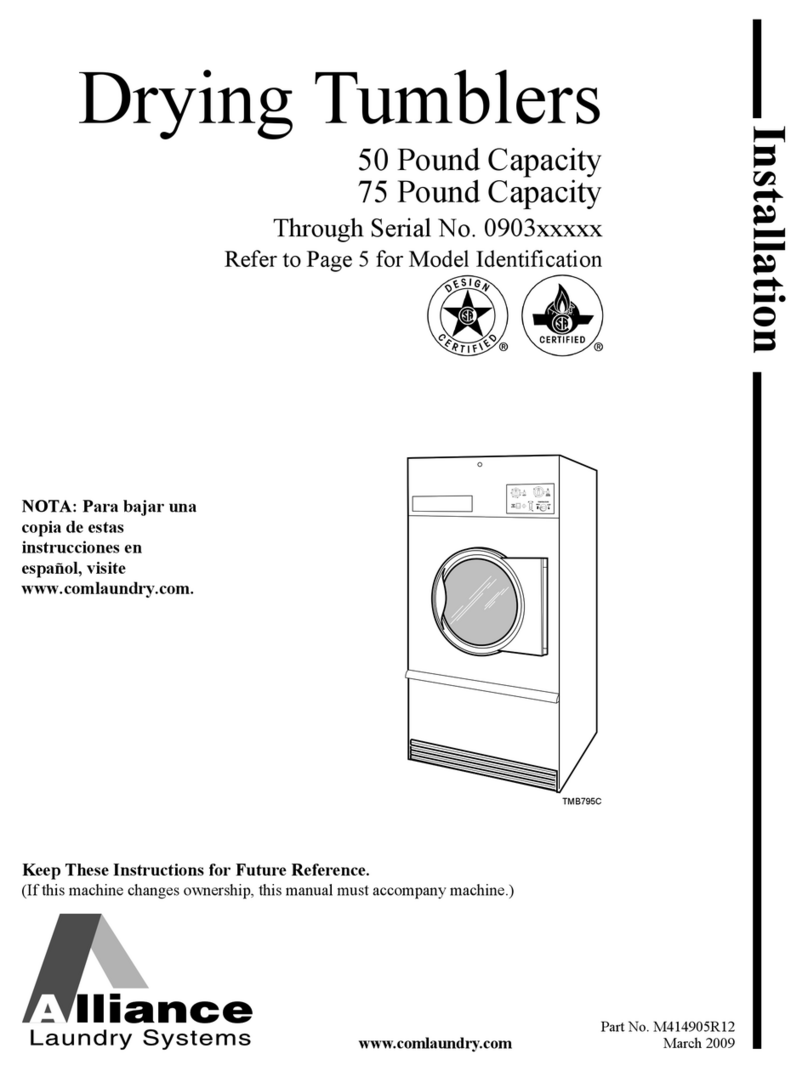
Alliance Laundry Systems
Alliance Laundry Systems TMB795C Installation
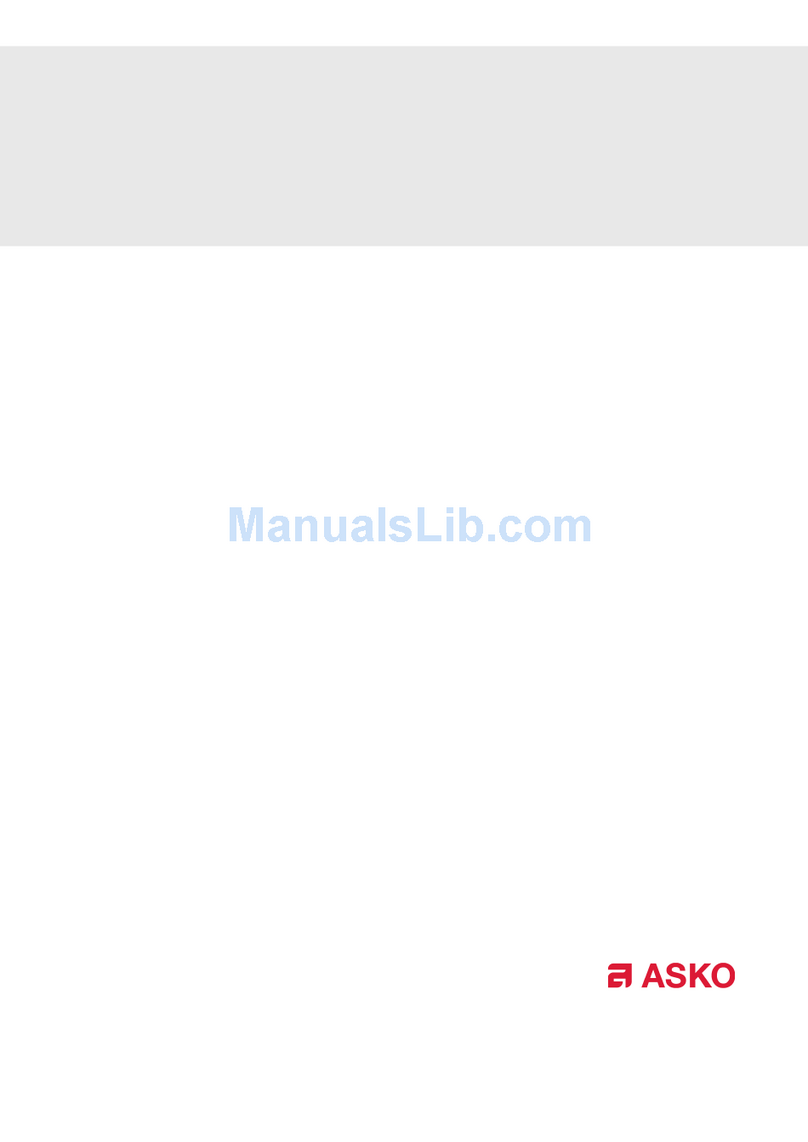
Asko
Asko T793C operating instructions
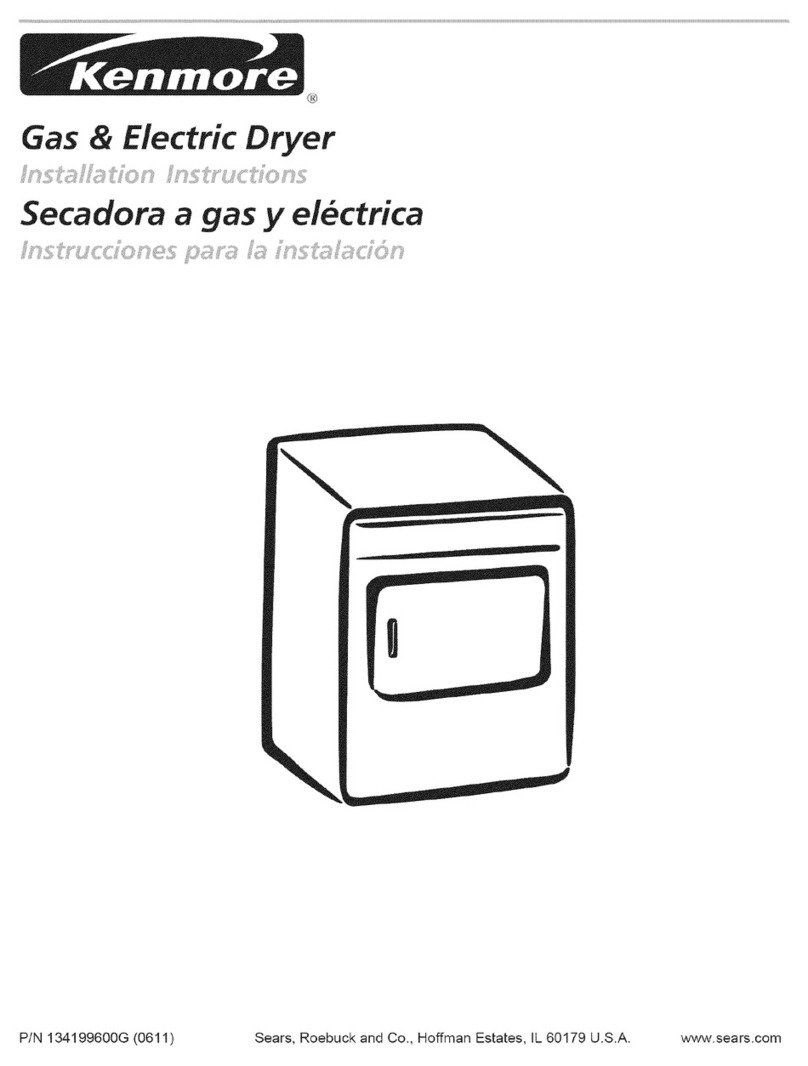
Kenmore
Kenmore 8041 - 5.8 cu. Ft. Capacity Electric Dryer installation instructions

Frigidaire
Frigidaire CAQE7077KW0 use & care

Bosch
Bosch WTX8HKM9SN User manual and installation instructions
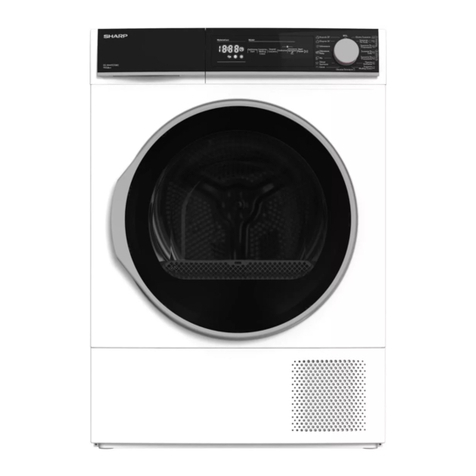
Sharp
Sharp KD-NHH9S7GW2-PL user manual

